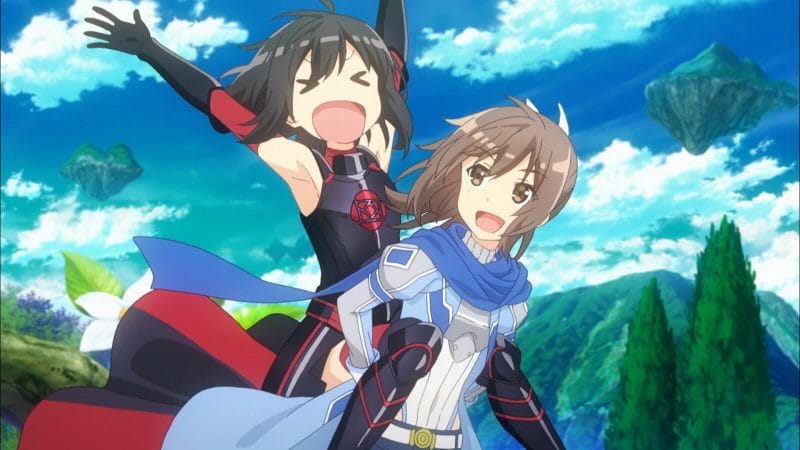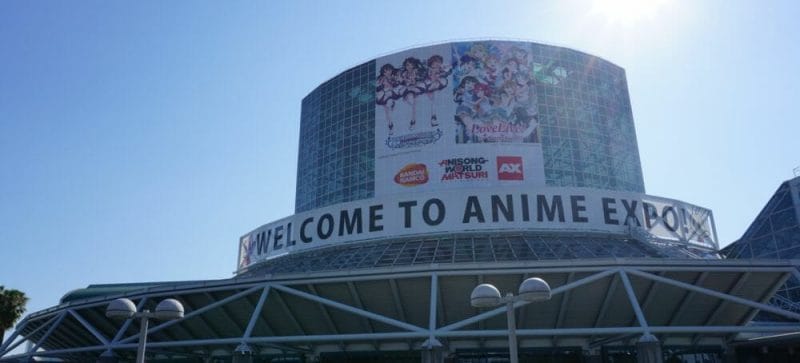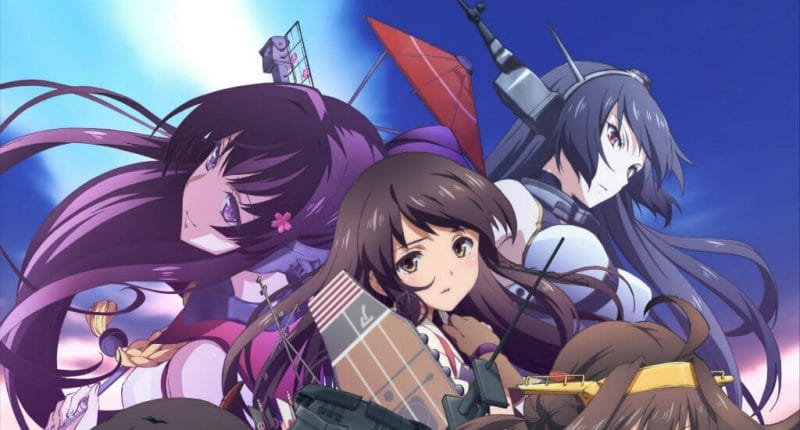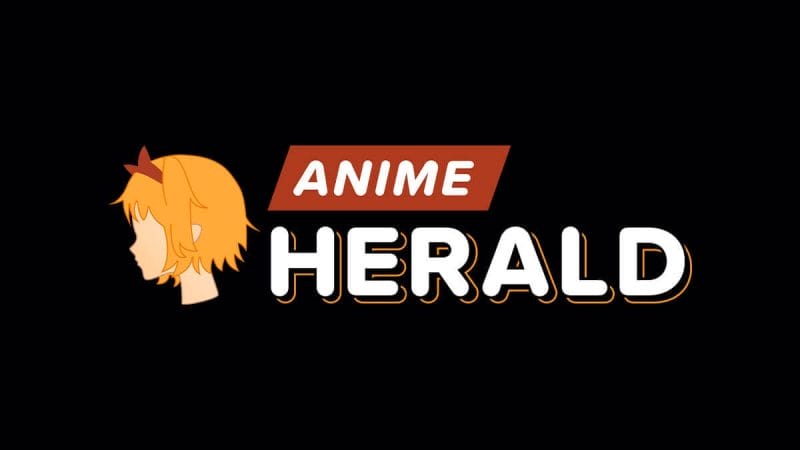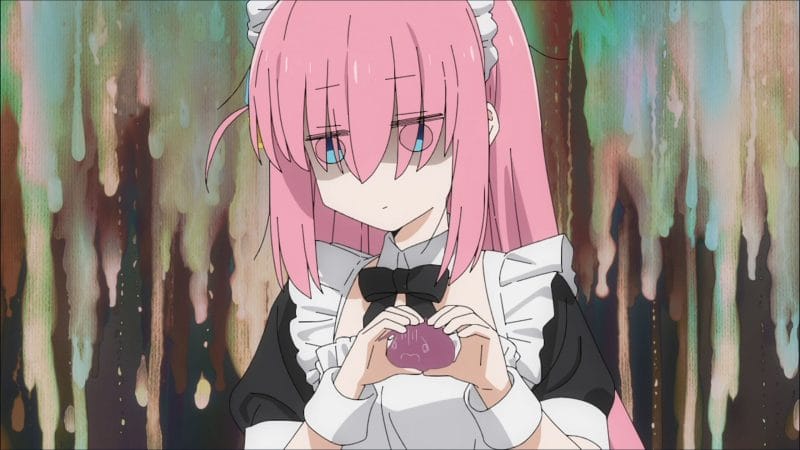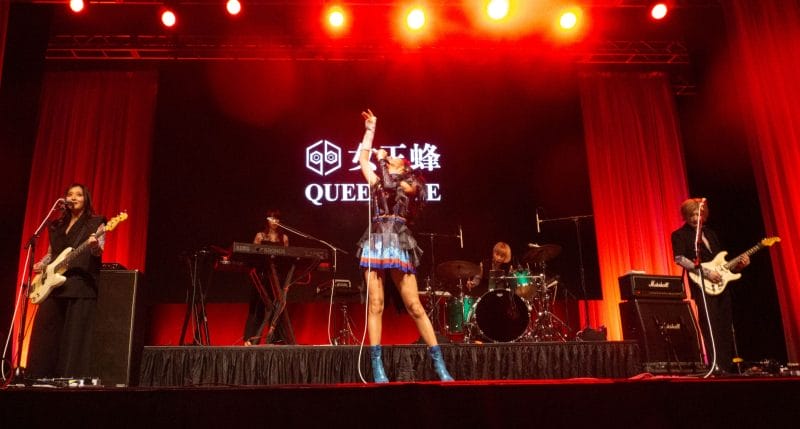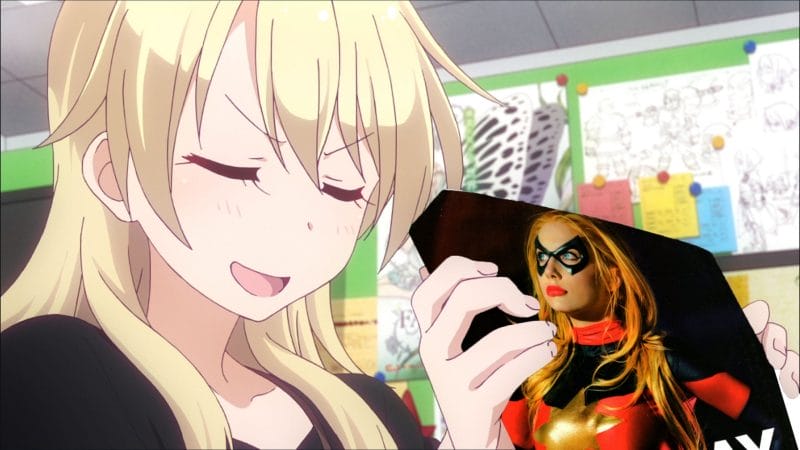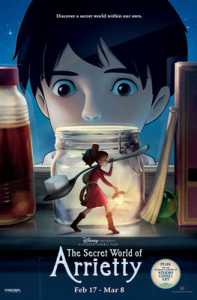 ANN reports that Disney’s release of The Secret World of Arrietty earned total of $106,361 last week, making it the highest-grossing Ghibli film in America. With these new figures available, Arrietty’s theatrical earning total $17,155,268, which makes it the fourth highest-grossing anime title in America.
ANN reports that Disney’s release of The Secret World of Arrietty earned total of $106,361 last week, making it the highest-grossing Ghibli film in America. With these new figures available, Arrietty’s theatrical earning total $17,155,268, which makes it the fourth highest-grossing anime title in America.
After numerous disappointments in the box office and low-grossing video ventures, Arrietty seems to be turning into Disney’s “Little Anime That Could. The film’s box office take is roughly $2.06 million higher than 2009’s Ponyo, and $5.21 million higher than the Oscar-winning Spirited Away. The film passed Pokemon 3, its nearest theatrical rival, by $103,140.
The numbers certainly are impressive, but as we drill down, we can see that a more fascinating story is waiting to be told.
If we take a look at the per-screen earnings for the past Ghibli films, we can see a clear trend in overall earnings. The base break-down is as follows:
| Title | Gross Earnings | # Screens | Earnings Per Screen |
|---|---|---|---|
| Princess Mononoke | $2,375,308 | 129 | $18,413.24 |
| Spirited Away | $10,055,859 | 714 | $14,083.84 |
| Howl’s Moving Castle | $4,711,096 | 202 | $23,322.26 |
| Ponyo | $15,090,399 | 927 | $16,278.75 |
| The Secret World of Arrietty | $17,155,268 | 1,522 | $11,271.53 |
Data of this manner is a truly fascinating thing, as we can read a clear story from the figures presented. From the current figures, we can see the following narrative beginning to surface:Princess Mononoke surprised theater-goers and Disney alike, with an exceptionally strong performance across the theaters it opened in. With an average take of $18,413 per screen, the company was eager to expand outward. With Spirited Away, Disney raked in a total of $10,055,859, though the overall take per theater was about $4,000 lower. So, with this in mind, we could possibly argue that the second film, due to increased reach, managed to garner a far larger audience. However, the overall take per theater implies that we saw either some dilution due to proximity of theaters, reduced customer enthusiasm across theaters overall, or some combination of the two.Howl’s Moving Castle opened in far fewer theaters than Spirited Away, though demand experienced a clear spike due partly to Spirited Away’s Oscar Win, and partly due to the massive strength of anime in America at the time. Because Disney failed to capitalize on the overall demand, the film saw a sharp decline in overall revenue.
2009 saw the the release of Ponyo to theaters, which arrived with a star-studded cast and nearly unmatched critical reception. Disney, anticipating incredible demand, ensured that 927 screens would show the feature, and their gambit paid off. While there was a sharp decline per theater, viewers were eager to see the film, and still managed to gross $15 million overall – a sharp increase from overall from both Howl and Spirited Away, and a tick up in earnings per-theater from Spirited Away. The sharp drop from Howl’s saw the start of a downward trend, though, as Arrietty hit theaters to a massive 1,522 theaters. The film’s current take is $17,155,268, or about $11,271.53 per screen. This is, without a doubt, the lowest per-screen gross of any Ghibli film at the moment (aside from Earthsea, which hit only five theaters in select showings). This sharp drop could imply a lack of interest balanced by wider distribution, a general dilution of viewers due to the number of screens, or distribution overreach with a number of low-performing theaters dragging the total down.
It will be most intersting to see how Disney reacts to Arrietty’s numbers. The overall box office take is encouraging, as the earnings eclipse some of the company’s own recent titles including Annapolis ($17,127,992), Miracle at St. Anna ($9,110,458) and Prom ($10,130,219). However, we still don’t know just how much Disney paid for the following:
- The film’s license
- The film’s dub, which included B-list actors like Amy Poehler and Will Arnett
- Overall Marketing costs
In addition, we have no clue on what Disney set for their benchmark of a successful release internally. The per theater figure is fairly troubling, though $11,271 per-theater earnings will likely be read as a general overreach as a whole by the company. This will likely lead to their scaling down of distribution for the next film. It’s impossible to say just how they’ll scale back at the moment, but I would say the most likely moves for the company include the following at this point:
- A smaller general release – fewer screens, with a higher concentration in more profitable areas
- A focus on a strong, appealing English adaptation
- More general downplay of Japanese aspects and Studio Ghibli as a whole in marketing
- More focus on pitching to Blue Oceans of customers – fans of similar literature, films, and the like
Of course, this is merely speculation at this point. Just how things will take shape are unknown at this point, and will remain as such until Disney plans another release. I will be interested in seeing just how the company reacts to this title’s overall performance going forward.



